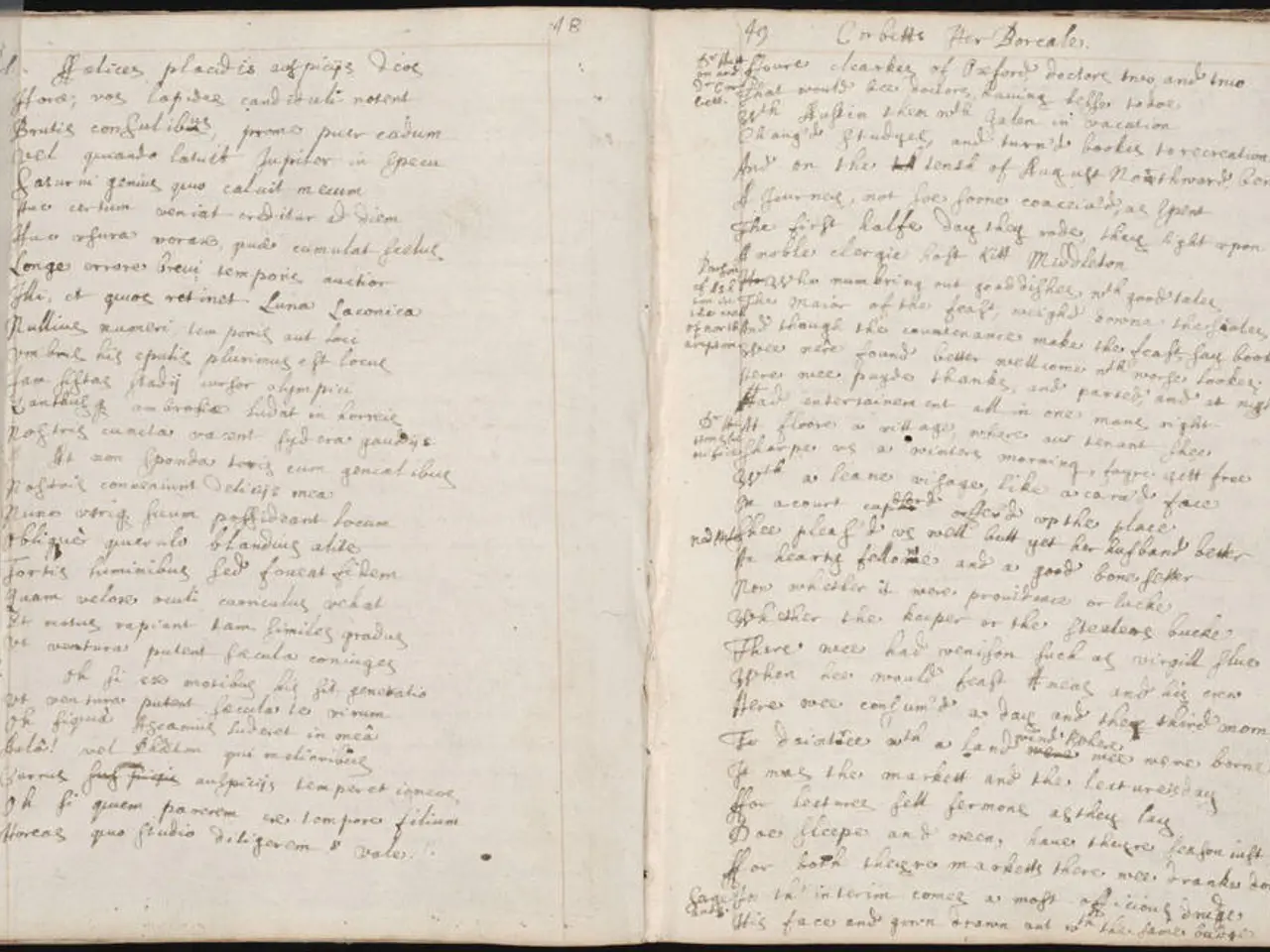Ancient Scripture: 6 Surprising Facts About the Oldest Known Writing Method on Earth - Cuneiform
The enigmatic cuneiform script, a writing system that has captivated scholars for centuries, is a testament to the rich history and complexity of the ancient Mesopotamian civilization. This wedge-shaped writing, named after the Latin word 'cuneus' for 'wedge', was first used around 3400 BC, and continued to be employed until the first century AD.
Many of the surviving tablets in museum collections, such as the British Museum, belong to schoolchildren, providing a glimpse into their spelling and handwriting exercises. These tablets, used for a short period, like a few hours or days for schoolwork, or a few years for letters, loans, or accounts, offer a unique perspective on the lives of the people who once inhabited this ancient land.
Cuneiform was initially developed by the Sumerians primarily for recording commercial transactions, such as exchanges of livestock and crops. However, it soon evolved into a complex tool used for laws, religious texts, historical events, and scientific observations. This shift marked a significant transition from simple record-keeping to the expression of complex ideas and relationships.
Literacy in cuneiform was highly specialized and restricted to a small elite class of scribes, known as tupšarru. Becoming a professional cuneiform writer required memorizing hundreds of complex signs, and education was provided in specialized scribal schools known as edubba. These institutions functioned as centres where children from wealthy families trained for years to master the art of writing.
Unlike Egyptian hieroglyphs, which were initially thought to be purely pictorial, cuneiform developed a standardized system with about 600 signs that could represent syllables, words, or concepts. This made it an early example of a syllabic writing system capable of expressing abstract ideas beyond simple images.
Cuneiform has the distinction of being one of the earliest writing systems invented independently by humans, alongside Egyptian hieroglyphs. However, it emerged more gradually through practical needs related to economic management rather than as an immediate symbolic or artistic invention.
The British Museum's collection contains more than 130,000 examples of cuneiform writing, offering proof that modern ideas and problems have been experienced by human beings for thousands of years. Through cuneiform, we hear the voices of not just kings and their scribes, but children, bankers, merchants, priests, healers, and women.
The cuneiform writing system, while not a language or an alphabet, uses between 600 and 1000 characters to write words or parts of them, or syllables or parts of them. It is believed that Egyptian writing evolved from cuneiform, as it can't have been an on-the-spot invention.
Irving Finkel and Jonathan Taylor, authors of the book Cuneiform (British Museum Press, March 2015), delve deeper into the history and usage of this ancient writing system. Cuneiform offers a fascinating insight into the past, and its continued study is essential for understanding the roots of human civilization.
Some lesser-known facts about cuneiform include the fact that both reeds and clay, which were used to write cuneiform, were readily available in the rivers alongside the Mesopotamian cities where cuneiform was used (now Iraq and eastern Syria).
The article was first published by History Extra in 2015. It is worth noting that children who visit the British Museum seem to learn cuneiform quickly, considering clay homework in spikey wedges more exciting than exercises in biro on paper. The distance in time that separates us from the latest surviving cuneiform tablet is only just over half of that which separates that tablet from the first cuneiform. This underscores the enduring appeal and relevance of this ancient writing system.
The education and self-development of children in ancient Mesopotamia were prioritized in specialized scribal schools known as edubba, where they trained for years to master the art of writing cuneiform. These schools, attended by children from wealthy families, provided the foundation for their future roles as professionals, such as scribes, bankers, or merchants.
The study of cuneiform, one of the earliest writing systems invented by humans, offers a unique perspective on the lives of people from various backgrounds, including children, bankers, merchants, priests, healers, and women, in ancient civilizations.




